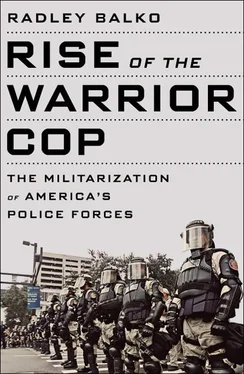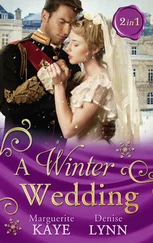12. Charles G. Loring, closing argument in the Thomas Sims hearing, April 8, 1851, available at: http://archive.org/stream/trialthomassims00circgoog#page/n4/mode/2up(accessed September 5, 2012).
13. Jacqueline Jones, Saving Savannah: The City and the Civil War (New York: Random House, 2008), p. 9. As a tradesman, Sims had received better treatment than most slaves and could earn wages for his work. Even though he was required to give his wages to his mother, who was required to give them to Potter, he could have accumulated enough money before running away to bribe enough crew members to get himself to Boston.
14. The text of the Fugitive Slave Act of 1850 is available at: http://www.usconstitution.net/fslave.html(accessed September 1, 2012).
15. For an excellent history of the hearings of Thomas Sims and Anthony Burns and of the consequences of the Fugitive Slave Act of 1850, see Stanley W. Campbell, The Slave Catchers: Enforcement of the Fugitive Slave Law, 1850–1860 (Chapel Hill: University of North Carolina Press, 1970).
16. The Burns narrative is from Charles Emery Stevens, Anthony Burns: A History (John P. Jewett and Co., 1856), available at: http://docsouth.unc.edu/neh/stevens/stevens.html(accessed September 16, 2012); Albert J. Von Frank, The Trial of Anthony Burns: Freedom and Slavery in Emerson’s Boston (Cambridge, MA: Harvard University Press, 1998); and Chuck Leddy, “Boston Combusts: The Fugitive Slave Case of Anthony Burns,” Civil War Times (May 2007).
17. Robert W. Coakley, The Role of Federal Military Forces in Domestic Disorders, 1789–1878 (DIANE Publishing, 1996), p. 134.
18. Ibid.
19. Puleo, A City So Grand, p. 33.
20. Coakley, The Role of Federal Military Forces, p. 137.
21. Ibid., p. 136.
22. Ibid.
23. “Official Opinions of the Attorneys General of the United States, Advising the President and Heads of Departments in Relation to Their Official Duties,” vol. 6 (R. Farnham, 1856), pp. 466–474, available at: http://books.google.com/books?id=xY5JAQAAIAAJ&dq(accessed September 16, 2012).
24. The Reconstruction narrative is from Coakley, The Role of Federal Military Forces, pp. 129–140.
Chapter 3: A Quick History of Cops in America
1. Samuel Walker, Popular Justice, 2nd ed. (New York: Oxford University Press, 1998), p. 16.
2. Ibid., p. 170.
3. Eric Burns, Spirits of America: A Social History of Alcohol (Philadelphia: Temple University Press, 2004) p. 229.
4. Burns, Spirits of America, p. 229.
5. The history of early policing in the United States is from Walker, Popular Justice; Roger Lane, “Urban Police and Crime in Nineteenth-Century America,” and Eric H. Monkkonen, “History of Urban Police,” both in Modern Policing, ed. Michael Tonry and Norval Morris (Chicago: University of Chicago Press, 1992); Robert H. Langworthy and Lawrence F. Travis III, Policing in America (Englewood Cliffs, NJ: Prentice-Hall, 2003); Burns, Spirits of America; and Samuel Walker and Charles M. Katz, The Police in America, 7th ed. (New York: McGraw-Hill, 2011).
6. See Walker, Popular Justice, pp. 173–175.
7. Clayton Laurie and Ronald Cole, The Role of Federal Military Forces in Domestic Disputes, 1877–1945 (Washington, DC: US Army, Center for Military History, 1997), p. 324.
8. The Bonus March is summarized from Roger Daniels, The Bonus March: An Episode of the Great Depression (Westport, CT: Greenwood Publishing, 1971).
9. “The Bonus Army: How a Protest Led to the GI Bill,” Radio Diaries (National Public Radio), November 11, 2001, available at: http://www.npr.org/2011/11/11/142224795/the-bonus-army-how-a-protest-led-to-the-gi-bill(accessed August 10, 2012).
10. “1932 Bonus March,” GlobalSecurity.org, available at: http://www.globalsecurity.org/military/ops/bonus-march.htm(accessed September 1, 2012).
11. George S. Patton, “Federal Troops in Domestic Disturbances” (1932), available at: http://www.pattonhq.com/textfiles/federal.html.
12. Ibid.
13. Douglas MacArthur, remarks at a news conference, Washington, DC, July 28, 1932, transcript available at: http://www.wwnorton.com/college/history/america7/content/multimedia/ch29/research_01c.htm(accessed September 15, 2012).
14. US War Department, Basic Field Manual, vol. 7, Military Law, August 1, 1935, pt. 3, “Domestic Disturbances,” pp. 14, 31–67, cited and summarized in Laurie and Cole, The Role of Federal Military Forces, p. 364.
15. Laurie and Cole, The Role of Federal Military Forces, p. 364.
16. Ibid.
17. Ibid., p. 365.
18. See Robert W. Coakley, The Role of Federal Military Forces in Domestic Disorders, 1789–1878 (DIANE Publishing, 1996), pp. 17–38.
19. Farnsworth Fowle, “Little Rock Police, Deployed at Sunrise, Press Mob Back at School Barricades,” New York Times, September 24, 1957.
20. Steve Barnes, “Federal Supervision of Race in Little Rock Schools Ends,” New York Times, February 24, 2007.
21. W. H. Lawrence, “Eisenhower Irate; Says Federal Orders ‘Cannot Be Flouted with Impunity’; Protection of Laws Denied; President Warns He’ll Use Troops; Queried on Force Drafted in Washington,” New York Times, September 24, 1957. For a thorough analysis of Eisenhower’s deliberation, decision, and motives about sending troops to Little Rock, see Walker, Popular Justice, pp. 174–176.
Chapter 4: The 1960s—From Root Causes to Brute Force
1. Miller v. California, 357 US 301 (1958).
2. Ibid.
3. Ker v. California, 374 US 23 (1963) (Brennan, dissenting).
4. Ibid.
5. Layhmond Robinson, “Assembly Votes Anticrime Bills,” New York Times, February 12, 1964.
6. Martin Arnold, “NAACP and CORE to Fight Bills Increasing Police Powers,” New York Times, February 29, 1964.
7. Douglas Dales, “Rockefeller Signs Bills Increasing Powers of Police,” New York Times, March 4, 1964.
8. Fred P. Graham, “Why Cops May Knock That ‘No-Knock’ Law,” New York Times, February 1, 1970.
9. Richard Bartlett, interview with the author, June 2012.
10. The Watts narrative is from Daryl F. Gates, with Diane K. Shah, Chief: My Life in the LAPD (New York: Bantam, 1993), pp. 101–119; Valerie Reitman and Mitchell Landsberg, “Watts Riots, 40 Years Later,” Los Angeles Times, August 11, 2005; Darrell Dawsey, “To CHP Officer Who Sparked Riots, It Was Just Another Arrest,” Los Angeles Times, August 19, 1990.
11. “Military Support of Law Enforcement During Civil Disturbances: A Report Concerning the California National Guard’s Part in Suppressing the Los Angeles Riot,” California Office of State Printing, August 1965, available at: http://www.militarymuseum.org/watts.pdf(accessed September 15, 2012).
12. “One person threw a rock, and then, like monkeys in a zoo, others started throwing rocks.” See “Past Police Chiefs,” Los Angeles Times, April 17, 1992.
13. Daryl Gates, Chief: My Life in the LAPD (New York: Bantam, 1992), p. 104.
14. Mapp v. Ohio, 367 US 643 (1961).
15. Robinson v. California, 370 US 660 (1962).
16. Gideon v. Wainwright, 372 US 335 (1963).
17. Brady v. Maryland, 373 US 83 (1963).
18. Escobedo v. Illinois, 378 US 478 (1964).
19. Miranda v. Arizona, 384 US 436 (1966).
20. Katz v. United States, 389 US 347 (1967).
21. William F. Buckley, “The Court and the Fifth” (syndicated), Sarasota Herald-Tribune, June 18, 1966.
Читать дальше












